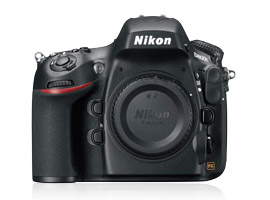Introduction

Quick Sensor Summary: Nikon D800E is new king in sensor quality
The Nikon D800E received an overall DxOMark score of 96 points, making it the best camera ever tested at DxOMark. It edged out the D800 – which was crowned king of camera quality back in March – by a single point.
This small one-point difference illustrates how remarkably close the two cameras are in quality. Much like its sibling, the D800E’s sensor is unrivaled in its ability to: capture rich and varied color, perform well in extreme lowlight environments, and record details in both dark shadows and extreme brightness.
Color Depth

The D800E’s portrait score, which measures the sensor’s color depth, was 25.6 bits. The score is just 0.3 bits better than the D800, and this small gap between the two models was noted at ISO 100 and lower. This difference is so slight that it is not distinguishable to the human eye. Both cameras are capable of capturing images with rich and diverse color quality, an important attribute for all photographers, especially those that specialize in portraitures.
Dynamic Range

Dynamic range, which corresponds to the ratio between the maximum and minimum brightness a camera can capture, was best in the D800. But just barely. The D800E, scoring 14.3 EVs (exposure value), lagged the D800 by an insignificant 0.1 EV. Both cameras would do a great job for landscape photographers who so frequently rely on a camera to preserve details in high contrast images.
Low-Light ISO

Like the D800, the D800E pushed the limits of good image quality when shooting at high ISO settings. The D800E reached its threshold at around 2979 ISO versus the D800’s 2853 ISO. This ISO gain by the D800E is so small that it is within measurement tolerances. Both cameras would easily satisfy the most scrupulous sports or entertainment photographers who so frequently depend on high ISOs to freeze fast action in dark settings.
The one-point spread between Nikon’s D800E and the D800 is so small that it can be considered a draw – the two are practically identical. Both cameras had exceptional performances in every DxOMark sensor quality category, and will almost certainly exceed the expectations of photographers.
DxOMark will further analyze these two cameras through lens tests. These optics reviews will provide a better picture of how these cameras operate differently.
For example, will the absence of the anti-aliasing filter in the D800E give it an edge in sharpness and resolution over the D800? If this is proven true in DxOMark’s optics tests, the D800E would be a better product for landscape and nature photographers who depend on cameras that excel at capturing crisp images and preserving details.
Inversely, will the D800E’s missing low-pass optical filter make it vulnerable to moiré patterns? If this is the case, fashion or architecture photographers should consider the D800. Its embedded anti-aliasing filter will prevent the moiré effect from creating those unwanted wavy patterns over repetitive manmade lines and shapes found in fabrics and buildings.
Check back with DxOMark soon, as we’ll have detailed and comprehensive answers to these questions in future lens reviews!








DXOMARK encourages its readers to share comments on the articles. To read or post comments, Disqus cookies are required. Change your Cookies Preferences and read more about our Comment Policy.